C&C. SKY SIGNS. Tariff Gift? Good Times=Bad.
July 12 | Posted by mrossol | Childers, Interesting, Science, Tariffs“Surprising” gas prices; weird space stuff connects to politics; solar hole, alien probes, southern auroras, Trump’s tariff bazooka, Harvard hints at ETs, and a surplus makes the Times cry; much more.
Source: SKY SIGNS ☙ Saturday, July 12, 2025 ☙ C&C NEWS
C&C ARMY POST
🪖 Folks, it’s that time of year again. Next week, I depart for whirlwind business travel and then begins the annual Childers family summer vacation. We’ll return just in time for school to start around August 3rd. My posting schedule may be erratic, untimely, shorter than normal (a blessing for some of you), less polished, at times reliant on some carefully selected “Classic C&C,” and it is possible that I might even skip a day here or there (but I will try not to). The good news is that my authorial batteries will be fully recharged upon my return. It will be over soon!
🌍 WORLD NEWS AND COMMENTARY 🌍
📈📈📈
Yesterday, my local Main Street Daily News ran a terrific story headlined, “Summer gas prices drop to lowest mark in 4 years.”
I’m sorry to tell this to my beloved readers in Western blue states, but in Gainesville, average gas prices just fell nine cents over the past week to $3.07 a gallon. The Circle-K on 13th Street is selling at $2.77.
And this news arrives amidst summer travel season, when gas prices normally surge. Indeed, government reports say that last week, gasoline demand even shot up from 8.64 million barrels per day to 9.15.
Yet gas prices are still falling, defying the experts. Womp, womp.
🔥🔥🔥
On top of all the weirdness here on our own Blue Rock, our generation is witnessing unprecedented Signs in the Heavens. Last month, Science Alert ran a record-breaking story headlined, “A Giant Hole Just Opened in The Sun – And It’s Blasting Earth With Solar Wind.” A massive, historic gatehas opened on the Sun. And that’s just the beginning.
A coronal hole isn’t a hole in the way you’d punch one through paper— it’s more like a tear in the Sun’s magnetic fabric, a place where the Sun’s outer atmosphere thins and its inner plasma slips free into space. In ultraviolet light, it looks like a gaping shadow, a bruise on the solar surface. These holes form when magnetic field lines open up like vents, unleashing a torrent of charged particles —what scientists call high-speed solar wind— that gushes toward the planets at over a million miles per hour.
“Think of it as a firehose of solar wind escaping into space,” said NASA solar physicist C. Alex Young. “And when it’s aimed at Earth, it can slam into our magnetic field and rattle it hard.” That means auroras dancing across the skies and risks to satellites, power grids, and GPS. This hole is tied for the biggest Earth people have ever seen; and the previous records were all set within the last seven years.
In other words, it’s all been building to this. And maybe even more after this.
🔥 For centuries, the aurora was a northern myth— the Northern Lights, a rare evening bonus for well-heeled Alaskan cruise whale watchers and polar explorers. But over the last several years, the skies have changed. Across weeks and months, rather than the typical hours, the aurora has returned, again and again, dancing over Australia, lighting up South America, reaching into Europe, the lower United States, and even the South Pacific. Not once. Repeatedly.
It’s no longer a rare northern phenomenon. It’s just The Lights. And it’s getting pretty common.
Earth people are watching, with their own bulbous eyeballs, the sustained effect of space weather that used to only be a once-in-a-lifetime miracle. It’s not a freak, one-off event; it’s a pattern, driven by a vast, long-lived coronal hole in the Sun’s surface that keeps rotating back toward Earth like a cosmic lighthouse—blasting solar wind directly at our planet.
And Earth is more vulnerable than ever: our magnetic field is weakening, part of a long decline that could be centuries in the making. Together, this solar fury and terrestrial softening are producing auroral displays that aren’t just spectacular; they’re historically unprecedented on a human time scale. The heavens aren’t subtle anymore. They’re glowing. Signs.
🔥 The source of all this wonder —and the quiet threat— is a coronal hole so vast, persistent, and geoeffective that it’s redefining everything we thought we knew about the Sun. Stretching over a million kilometers —longer than 60 Earths laid end-to-end— this coronal hole ranks among the largest ever seen (and all were recent records), and this one is the longest-lived, most consistently Earth-facing coronal hole ever recorded.
Unlike one-off solar flares, this persistent massive hole is a steady engine of solar wind, rotating back around and hitting Earth roughly every month. Its equatorial position makes it especially potent, blade-sharp in precision, and it shows no signs of fading. As one spaceweather expert put it back in December, 2023, when the last record-sized hole appeared (now surpassed by the current phenomenon): “The size and orientation… is unprecedented at this stage of the solar cycle.”
The current, even more unprecedented, record‑breaking coronal hole first became visible —and began its slow growth into historic scale— back in late September, 2024. But it gained real notoriety last month, when it completed nine months of continuous rotation and solidified its place in Solar Cycle 25 history. By mid‑July, it’s still facing Earth and not showing signs of abating — instead, it is on track to strike again over the next few days.
For context, most coronal holes are short-lived and modest in scale— blinking into existence for a few days or weeks before fading out without much fanfare. The average hole spans about 300,000 kilometers, and rarely persists for more than a month or two. The current equatorial (in the middle) behemoth, by contrast, has lasted over nine months, spans nearly a million kilometers, and has returned every 27 days to hammer Earth with high-speed solar wind. It’s not just an outlier—it’s a statistical freak of nature, and it’s still going strong.
But that astonishing news is not the only celestial anomaly confounding astronomers. Now let’s discuss the trio of interstellar visitors.
🔥 Three times within the last eight years, around the same timeframe as all the record-setting solar activity, something else never before seen has happened. Two days ago, National Geographic ran a story headlined, “Our solar system has a new mysterious visitor—what is it?” They’re calling it 3i/ATLAS; the numbering system reflects it is only the third of its kind ever seen. All recently.
You may have already heard of the first one, with the nearly unpronounceable name Oumuamua (“ooh-moo-ah-MOO-AH”). That one shot past Earth back in 2017, but it was so remarkable that fresh YouTubes about the odd artifact are still filling feeds today, with no sign of letting up.
Oumuamua shattered conventional astrophysics by becoming the first object ever observed entering our solar system from deep interstellar space— not orbiting the Sun, not part of the Galactic plane, but flying straight through on a hyperbolic intergalactic trajectory.
It didn’t act like a comet, or an asteroid, or anything else we’ve seen before. It spun, it tumbled, and most famously— it sped up as it left the solar system, without any visible propulsion or outgassing. In other words, it defied conventional physics. Harvard astrophysicist Avi Loeb went there, suggesting (however artfully) that it could be artificial— a relic of alien technology, perhaps, or maybe a controllable solar sail. He went on to write a 2023 New York Times bestseller about it: “Extraterrestrial: The First Sign of Intelligent Life Beyond Earth.”
🔥 But then, as the Oumuamua controversy continued to rage, two more equally bizarre interstellar wanderers have shot through. The most recent one, ATLAS, is shooting through this week. It is the largest of the three.
What makes these objects most remarkable isn’t that they came from outside the solar system. It’s that they don’t follow any of the rules. First, all three —Oumuamua, 2i/Borisov, and 3i/ATLAS— are all on hyperbolic trajectories, meaning they don’t orbit the Sun at all; they’re just passing through, unbound and unaffected by the gravitational leash that holds everything else in the solar system in its place.
Even stranger, none of them arrived neatly along the Milky Way’s galactic plane, where most stars and debris orbit in an orderly disk. Instead, they came in at steep, unpredictable angles, like stones thrown from deep space, possibly from very old or dynamically disturbed regions of the outer Milky Way— or much further away. They are, in every sense, cosmic outsiders— and the fact that three of them have appeared in such rapid succession, all within a decade of each other, raises questions that standard models can’t comfortably answer.
In 2019, 2i/Borisov flew past. It wasn’t quite as weird as Oumuamua. It looked more like what astronomers expected: an icy, outgassing comet. But Borisov wasn’t exactly “normal.” Its chemical signature —especially its high carbon monoxide content— was unlike any comet ever observed in our own system. It may have looked the part, but its composition suggested a completely different story.
Now, in 2025, we have the monstrous 3i/ATLAS— and it’s already breaking new records. Scientists guessed its age at over seven billion years, predating our entire solar system by more than 2.5 billion years. It’s swinging in on a steep, retrograde trajectory, from a completely different direction than the others. It’s not just old. It’s incomparably out of context.
The bottom line is, nobody knows what they are, why they are so weird, howOumuamua could have suddenly sped up as it left the solar system, or why we’ve never seen any of these types of interstellar visitors prior to the last seven years.
Those are all the facts. Now let’s have a little fun and speculate. Just a little.
🔥 What if, as Harvard astrophysicist Avi Loeb delicately hinted, these are not random coincidences, but something artificial? Loeb opined that, “These interstellar objects from our cosmic neighborhood could also be artificial in origin, just like tennis balls on the backdrop of familiar rocks in our backyard.”
I find the three interstellar visitors’ timing —alongside the Sun’s weirdness— extremely intriguing.
If they are artificial (or artificially sent by someone or something), what if they didn’t come to see Earth at all? What if, instead, they came to check on the Sun? The only common denominator in their trajectories wasn’t planet Earth. It was the star at the center of our solar system. Oumuamua dipped so close to the Sun that it actually passed inside Mercury’s orbit.
Maybe … they are interested in our star’s strange behavior.
If these objects were sent, flung, or tossed from somewhere else, then perhaps their purpose isn’t to explore life-bearing planets at all, but to monitor stars like ours when they reach some critical threshold. After all, we only recently discovered the Sun’s capacity for long-lived coronal holes, escalating solar wind, and what could be the start of a multi-decade surge in output. Combine that with the ongoing weakening of Earth’s magnetic shield —something that could affect the whole heliosphere— and you start to see the outlines of a system worth watching.
Or at least checking in on.
Avi Loeb’s hypothetical solar sail wouldn’t need to decelerate on approach if its objective wasn’t Earth. It would glide past, take a solar reading, maybe perform a course-correcting maneuver near perihelion —just like Oumuamua— and then sail off again, its job complete. And if that’s the case, then what we’ve witnessed over the past eight years isn’t just a trio of oddballs on galactic joyrides.
It might have been more like a diagnostic routine.
🔥 Humans have always studied the sky for signs. In ancient Egypt, a dimming Sun foretold the death of a pharaoh. In Babylon, unexpected lights in the heavens were warnings to kings. Chinese astronomers kept millennia-long records of “guest stars,” comets, and auroras, interpreting each anomaly as a message. Usually a dire one.
Einstein once said, “The most beautiful thing we can experience is the mysterious. It is the source of all true art and science.”
Though it sounds like folklore, the link between solar activity and human behavior is supported by centuries of observation and a growing body of scientific research. Periods of heightened solar output —marked by sunspots, aurorae, solar flares, and geomagnetic storms— have been statistically associated with increased unrest, technological disruptions, and even shifts in human psychology.
Sound familiar?
Hospital admissions for mood disorders rise during solar storms. Some studies suggest spikes in heart attacks and strokes during geomagnetic disturbances. Markets grow more volatile. Wars and revolutions have clustered, historically, around peaks in solar cycles like this one. The mechanisms aren’t fully understood, but the correlations are too consistent to ignore. The Sun doesn’t just light our days; it stirs the invisible systems within us, the electrical, biological, even the emotional. When our star grows chaotic, so do we.
As researcher Sacha P. Dobler noted in his historical survey of solar cycles and human behavior, “Periods of solar change do not merely alter the weather—they reshape the world.” History proves it. When the Sun flares, humans seem to flare with it: revolutions, revivals, migrations, madness, and miracles.
If the past is any guide, what we’re seeing now isn’t just climate or coincidence— it’s epochal.
🔥 What do we see in the headlines about the oceans right now? Exactly the kind of instability you’d expect if something big were stirring the global circulatory system. The Atlantic Meridional Overturning Circulation (AMOC) is weakening— potentially nearing a collapse timeline measured in decades, not centuries. BNE Intellinews, last week:
In the Pacific, El Niño and La Niña patterns are arriving earlier, lasting longer, or vanishing altogether, defying historical models. Record-breaking marine heatwaves are blooming in the North Atlantic and the Southern Ocean. Salinity patterns are shifting in ways that suggest deepwater disruption— as if the pumps of the ocean are starting to sputter. LiveScience, yesterday:
And let us recall the expert-baffling “South Atlantic Anomaly,” that vast “dent” in the Earth’s magnetic field, right above the region where sea ice is collapsing, ocean salinity is spiking, and auroras are flaring where they shouldn’t. EcoNews, about three weeks ago:
It’s not just the South Atlantic Anomaly anymore. It’s become the GlobalMagnetic Anomaly. And it’s still growing. And it’s so powerful that most low-Earth satellites must power down to cross through it. The danger zone keeps getting bigger, confounding satellite operators.
None of this proves a solar cause, but taken with the sky’s increasing violence, it’s impossible to ignore the timing. The oceans are lurching. The skies are glowing. The machinery is moving. And the experts are, as ever, baffled by all the “mysterious” goings on. They just can’t put the pieces together.
All the evidence indicates we live in truly historic times. Vast, unknowable changes are coming. The Sun is awakening. The Earth is shifting beneath our feet. Forces once thought stable magnetism, ocean currents, even the length of the day— are now in motion. We’re watching the sky crackle with fire, the seas churn with salinity, and new visitors from deep intergalactic space glide silently past our star.
And yet, amid all the mystery and upheaval, there is clarity: we were made for this moment. The ancients called these things signs; we call them data. But the meaning remains. These aren’t just omens of collapse— they’re also signals of profound transformation. Of endings, yes, but also of new beginnings. So look up. Look inward. The age of passive spectatorship is over. Long dormant machinery is lurching into gear, and our generation is not here by accident.
Oh, and again: the experts are useless.
🔥🔥🔥
Last week, National Review ran a very thought-provoking article, headlined, “The Senate May Hand President Trump a New Tariff Bazooka.” It’s another Trump turnaround, where he transforms a threat into an asset.
Hyper-neocon Senator Lindsay Graham (R-S.C.) has been trying for months to pass a bill sanctioning countries that still do business with Russia, sanctions that Lindsay labeled “bone-crushing.” They were meant to force the Russians to give up in Ukraine, but there have been two persistent problems.
First, the Russians don’t seem too worried about it. Stony-faced Russian officials said, “dah, we have developed many ways to work around American sanctions.” But more importantly, Trump hasn’t been keen, since sanctions against tons of countries levying eye-watering 500% tariffs (“bone crushing”), would upset all Trump’s delicate tariff negotiations.
But the seemingly dead bill has, zombie-like, lurched back out of the legislative grave. And it’s pretty remarkable.
To tempt the President, the bill’s sponsors have sweetened the deal. Under the latest configuration, Trump would have full discretion to tariff any country that is “helping” Russia —ostensibly by buying their gas, oil, nuclear, or other energy products— up to 500%. But the questions of who and how muchwould be up to Trump.
Hilariously, and ironically, the largest group of countries potentially within the newly-defined crosshairs includes the entire European Union, which is the bloc of NATO countries most loudly demanding more sanctions. “The European Union,” the story explained, “is the top importer of Russian natural gas.” I don’t think 500% tariffs is exactly what the Europeans had in mind while they were previously clapping for sanctions like trained seals seeing the fish bucket appear on deck.
The reason Trump would be interested in playing along is that, while the Supreme Court recently temporarily lifted a stay on his tariffs plan, the litigation continues, before a skeptical judge who already tried to kill the tariffs once, and is still seeking a way to shut them down for good at the end of the month. But a bill like this, if passed, would give Trump a whole new, Congressionally-approved toolkit, and it would blow all the current anti-tariff lawsuits out of the water.
Trump could tariff anything he wants, not just energy products, at any tariff rate. “Graham revealed that the updated text of the bill went further,” National Review moaned, “to give the president expansive authority to levy tariffs on all imports from eligible countries at any rate up to 500 percent.” Lindsay said, “The goal is to let him waive all of it or part of it. He could do one percent, or he could do 499.”
National Review, a neocon powerhouse, seemed skeptical. But the final bill’s form remains unknown, and would face further changes when it gets to the House. But it looks like Trump has turned it completely around.
This isn’t just a tactical turnaround. It could be a strategic masterstroke. By co-opting the very sanctions legislation designed to constrain him, Trump may wind up with the most powerful trade weapon any U.S. president has ever wielded— one with near-limitless flexibility and global reach. Instead of locking him into a punitive framework aimed at Russia, the bill’s latest draft would hand Trump a blank check to reconfigure the global trade map in real time, under the banner of national security.
And the timing couldn’t be better. While Trump is already moving aggressively on tariffs —reviving supply chains, repatriating manufacturing, and forcing adversaries to the negotiating table— those efforts remain entangled in court battles and vulnerable to procedural sabotage. But if Congress hands him a. fresh tariff authorization tied to enforcement of foreign energy sanctions, those actions would carry brand-new Congressional legitimacy, insulating them from the legal challenges currently in motion.
Sanctions may have been the original aim. But the real result could be a globally empowered American trade doctrine, built not on paper treaties, but on velocity, flexibility, and Trump’s favorite word: deals. And it proves that, once again, in Trump’s second term, he’s turning the traps laid against him into weapons.
📈📈📈
Speaking of tariffs, let me show you a few headlines from yesterday, which will make you equally encouraged and hate the experts more. They were all so good, I couldn’t stop at one. First up, CNBC—unexpectedly!:
Trump said tariffs would generate revenue. He said the U.S. could weaponize its trade imbalance. He said deficits weren’t permanent. He said we could balance the budget despite dire predictions about the budget-busting OBBBA. But the arrogant experts laughed and laughed, the journalists skeptically scoffed, Democrats sneered and scolded, invoking inflation apocalypse, but now —unexpectedly!— the Treasury’s running a surplus.
Here is the next delicious headline. Reuters, which couldn’t bring itself to credit Trump for making tariff history, ran this golden news nugget:
Haha, the New York Times couldn’t bring itself to report the news at all. Instead, it warned that the markets are getting dangerously over-optimistic. We need more pessimism, they say:
Instead of reporting on Trump’s historic, tariff-fueled budget surplus, Eeyore and the New York Times are warning darkly about too much winning. Not collapse— prosperity panic. The new concern is that investors are responding too positively to Trump’s economic wins. That the real problem is: optimism. “This dynamic,” the Times gloomily reported, “is still emblematic of a market that is starting to get carried away with itself.”
“Don’t get too excited,” the Times sniggered.
For years, the expert class smirked —loudly and repeatedly— at the very idea that tariffs could possibly generate any meaningful revenue, let alone contribute to a budget surplus. Their line was consistent: tariffs are taxes on consumers, not tools of statecraft. They claimed tariffs would simply be passed along to U.S. buyers, hurt American manufacturers, and net no real fiscal benefit.
Larry Summers, Paul Krugman, the D.C. think tank crowd, and even a handful of Republican budget hawks, all lined up to dismiss the idea as “economically illiterate,” “19th-century isolationist thinking,” or just “Trumpian delusion.”
So who turned out to be economically illiterate? Certainly not the mean tweeter. The President weighed in, in all-caps:
They wouldn’t listen. They didn’t believe. And now they’re afraid it’s working too well. Oh, corporate media, what would we do for entertainment without you?
🔥🔥🔥
Yesterday, Tucker Carlson went on a broad-ranging rampage at Turning Point USA’s Student Action Summit. The former Fox anchor agreed that all this progress in the culture wars was great, but, “At some point,” Tucker said to wild applause, “I want to look around and see a better country.” He wasn’t wrong.
CLIP: Tucker Carlson brings the fire at TP USA meeting (1:54).
“You spend all day telling me that it’s so important that boys not play on girls soccer teams or whatever. I agree! I hate the tranny stuff passionately. But I don’t know, it kind of feels like you’re feeding me appetizers,” Tucker complained. Now he wants the entree, and he wants surf and turf.
In an obviously fiery mood, Tucker demanded to know, “Why are my cities disgusting? It smells like weed and halal food. I don’t want people sleeping on sidewalks. I don’t want to see people OD’ing on drugs.” He wondered why we’re bombing Iranian bunkers instead of sending Seal Team Six to take out the drug dealers. And he asked simply, “Can my children have a roughly approximate life to what I had? Or how about just a middle-class life?”
Is that too much to ask?
Tucker linked tariffs to ‘surprising’ budget surpluses, ‘unexpected’ job gains, and falling prices that defy gloomy tariff predictions. “Japanese automakers announced this week that they are slashing auto prices for imports coming into the United States,” Tucker explained, “because of the tariffs and the money that the tariffs brought into the United States.”
Listen to the whole thing. You’ll love it.
Have a wonderful weekend! C&C shall return on Monday morning, just like an interstellar comet, to kick off another great week of essential news and cheeky commentary, adjusted for travel schedule.
Don’t race off! We cannot do it alone. Consider joining up with C&C to help move the nation’s needle and change minds. I could sure use your help getting the truth out and spreading optimism and hope, if you can:☕ Learn How to Get Involved 🦠

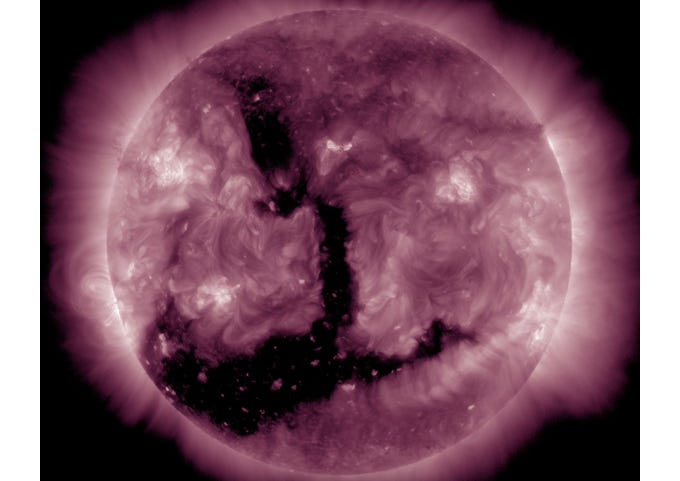
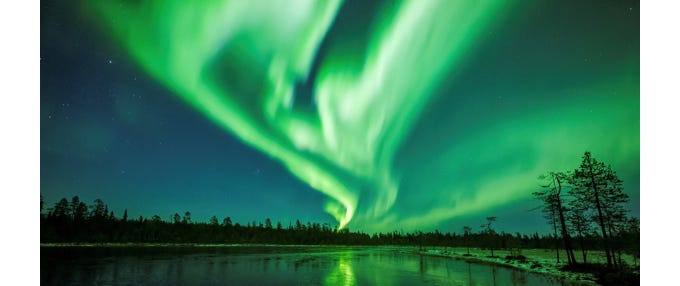
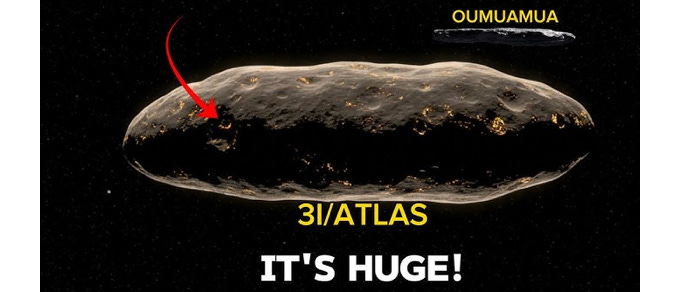











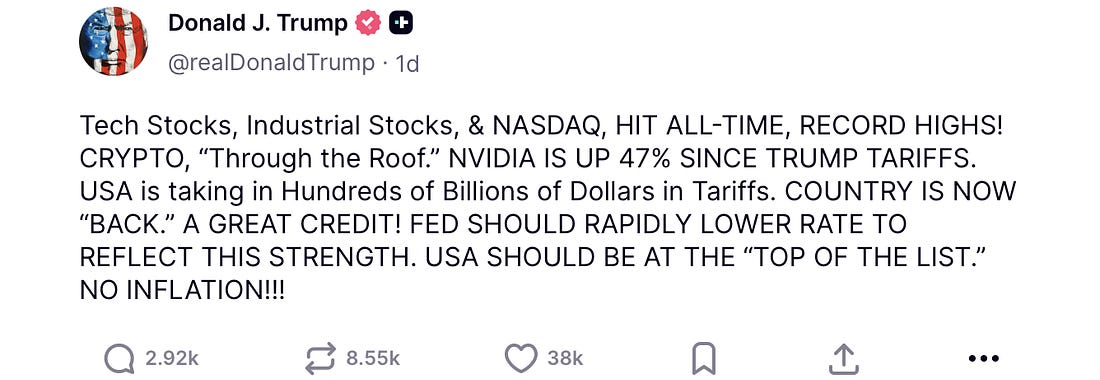
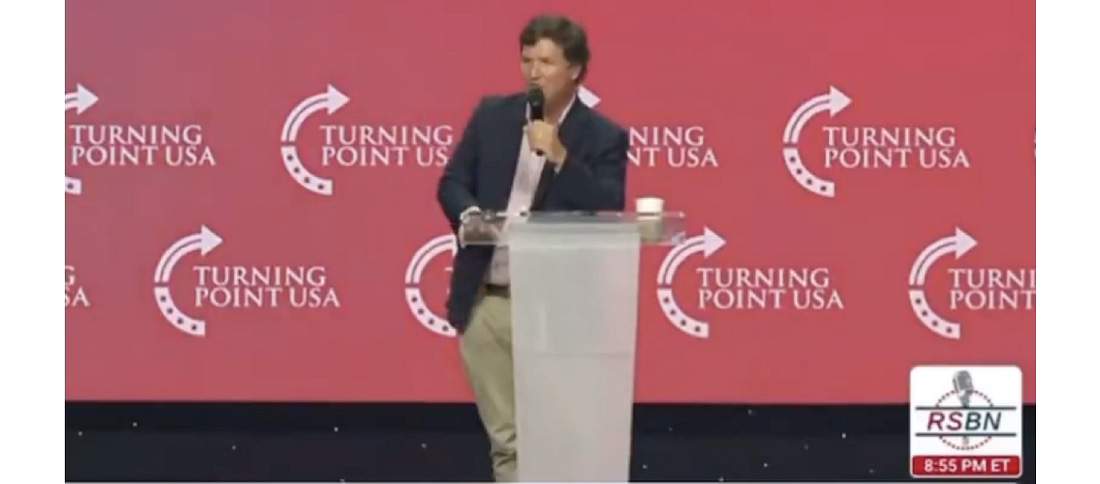





Leave a Reply
You must be logged in to post a comment.